Configuring Dashboard Parameters
Dynamic parameters allow users to execute custom queries or stored procedures dynamically based on the parameter while viewing the dashboard. Users can also use the parameter in expression columns.
Add a Dashboard Parameters
Users can create dashboard parameters at the datasource level. The dashboard parameter icon is provided as shown in the image below.
![]()
To open the Dashboard Parameter window, a default parameter will be added as follows.
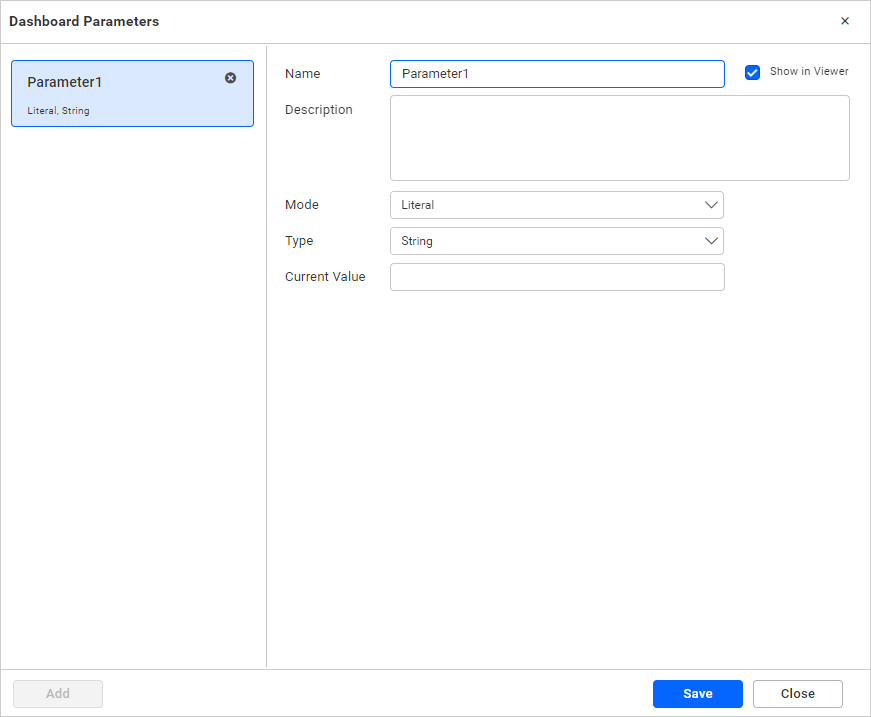
Modes
There are two different modes in the dashboard parameter:
-
Literal: Defines the static value of the parameter. -
List: Users can select multiple values for initial execution.
Literal mode
The literal mode allows users to add text, number, date, boolean, and range type values.

Select the String or Number Type and enter the Current Value as shown in the screenshot.
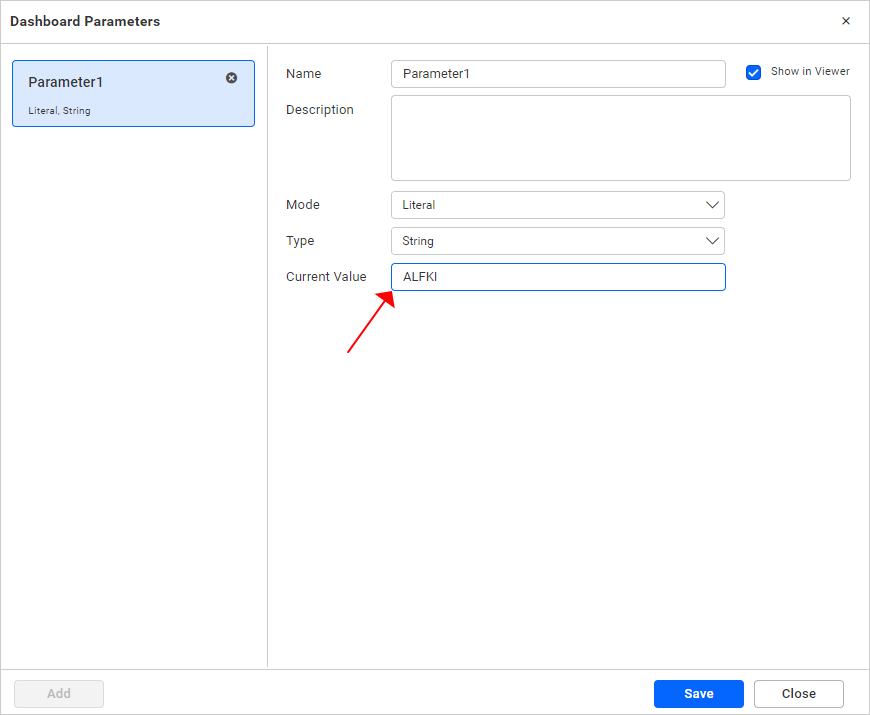
Select the Date type and choose the date and time in the date time picker for the date type parameter. The selected date and time values will be filtered based on the selected Date Format.
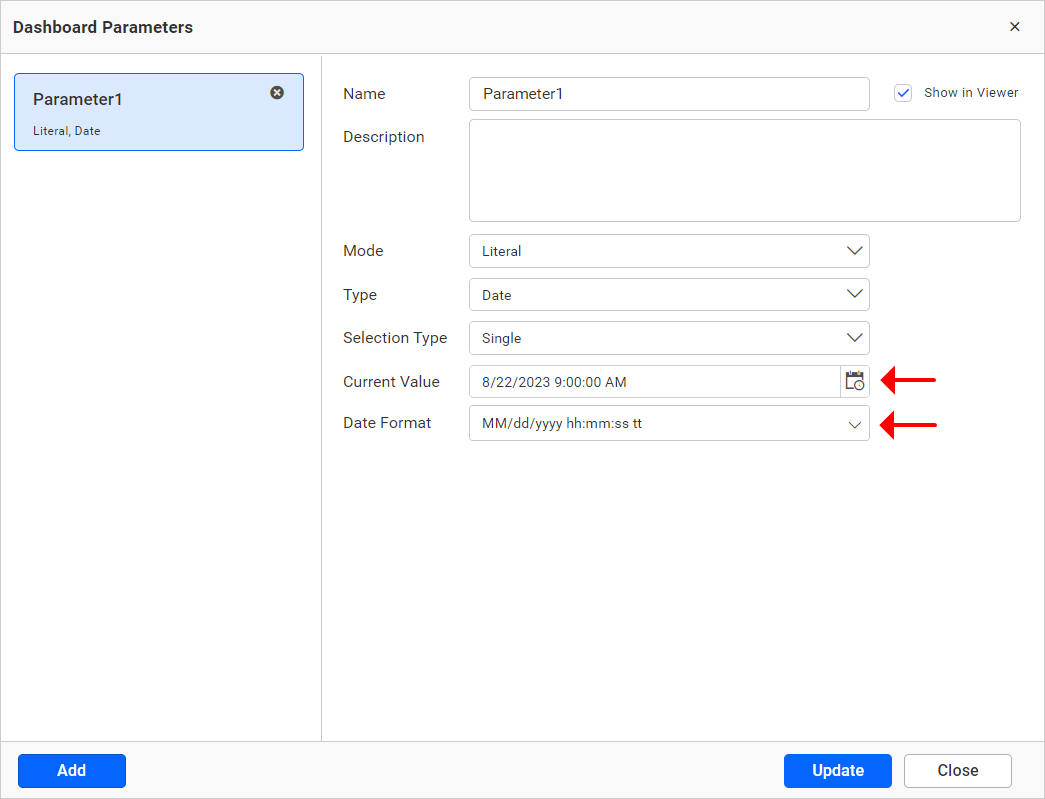
Select the Boolean type and choose true or false for the boolean type parameter.
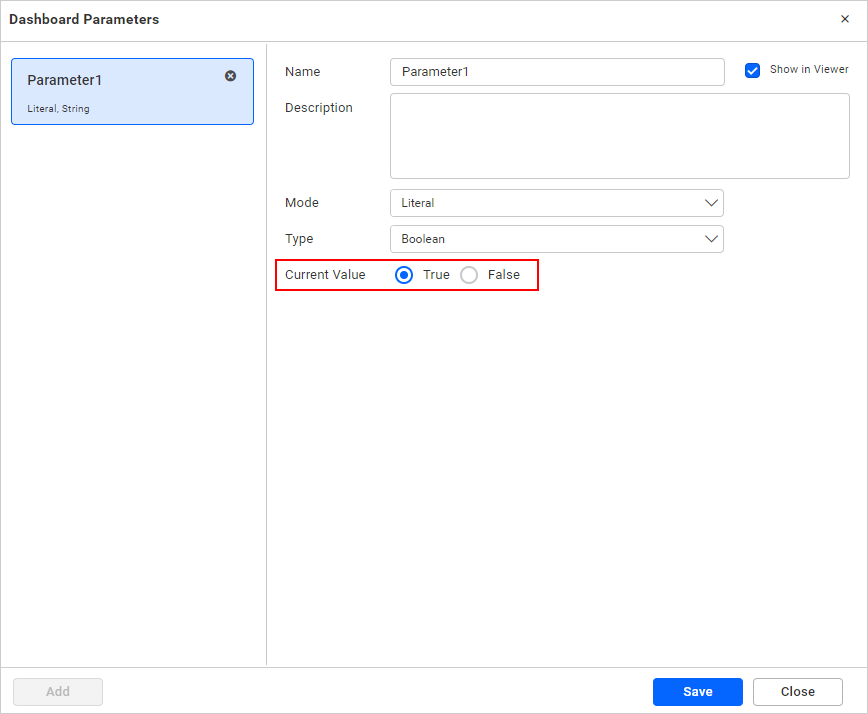
Users can add a description for the dashboard parameter.
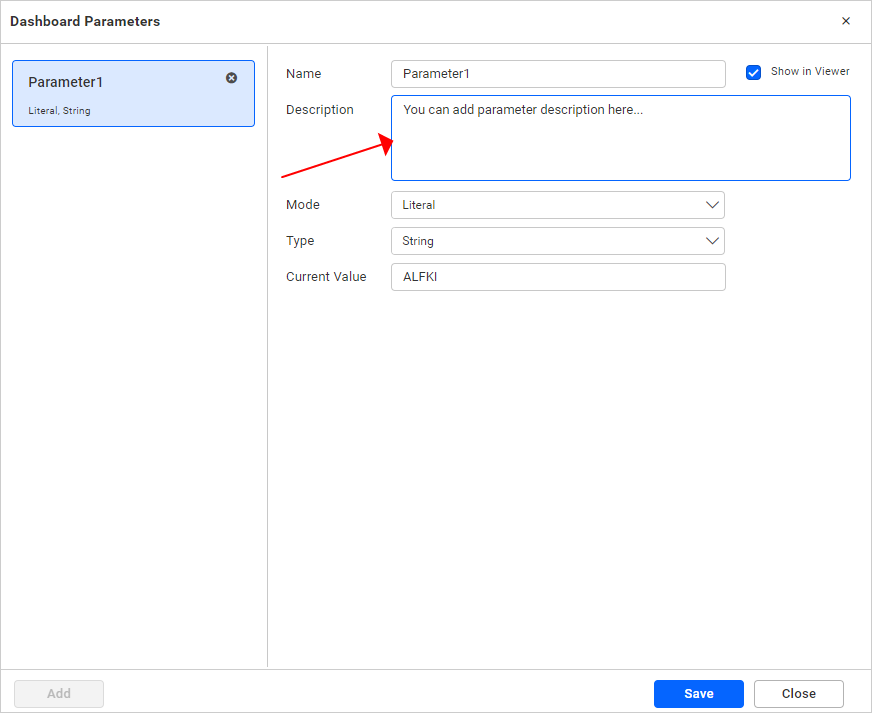
Click Save to save the added parameter. After the parameter is saved successfully, a success message will be shown in the dialog footer and Add will be enabled at the footer.
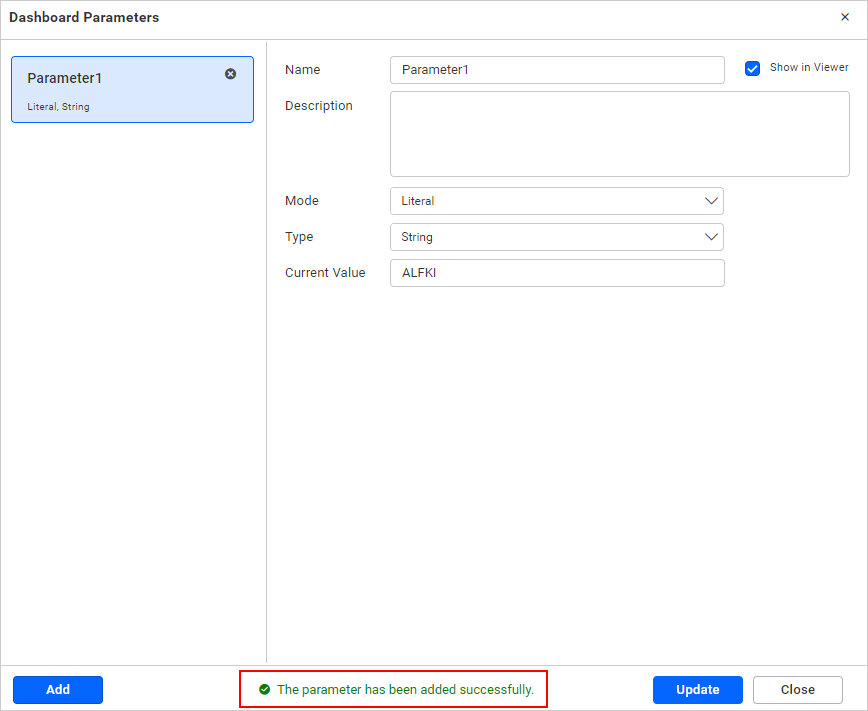
Users can provide range values for number and date type parameters by choosing Selection Type as range.
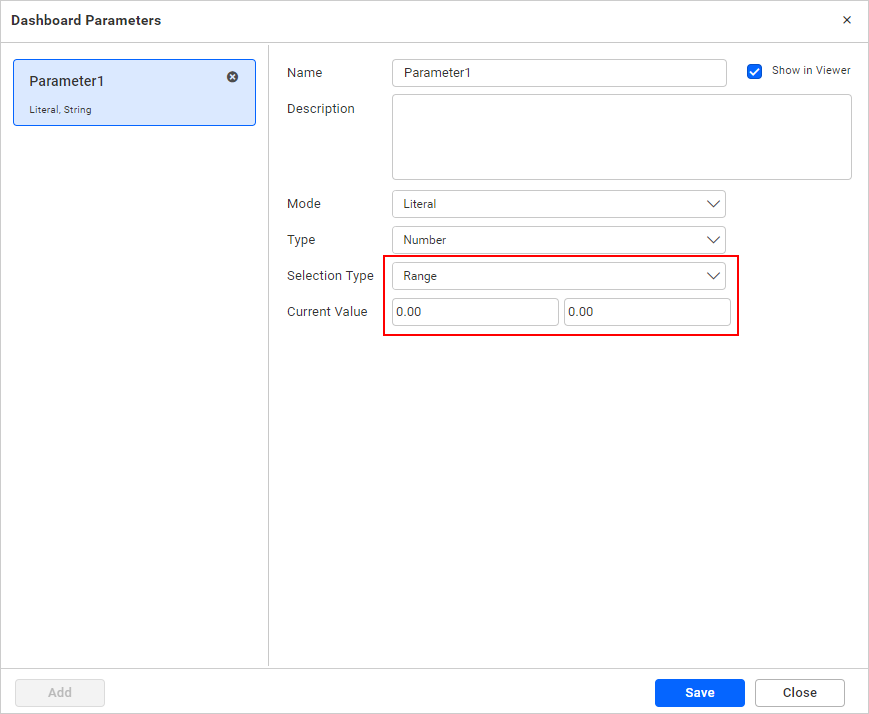
To add or edit the relative date range for date type parameters, select the Add Relative Date Range option from the drop-down. Users can create relative date ranges.

To remove all relative date ranges for the data type parameter, select the Clear Relative Date option from the drop-down. Users can remove all relative ranges.

List Mode
There are two different types in the list mode:
-
Manual: Allows users to add any number of values from the same data type, which can be text, number, or date. -
Data Source: Allows users to select multiple values from the data source.
List Manual type
The list type allows users to add values to the list manually.
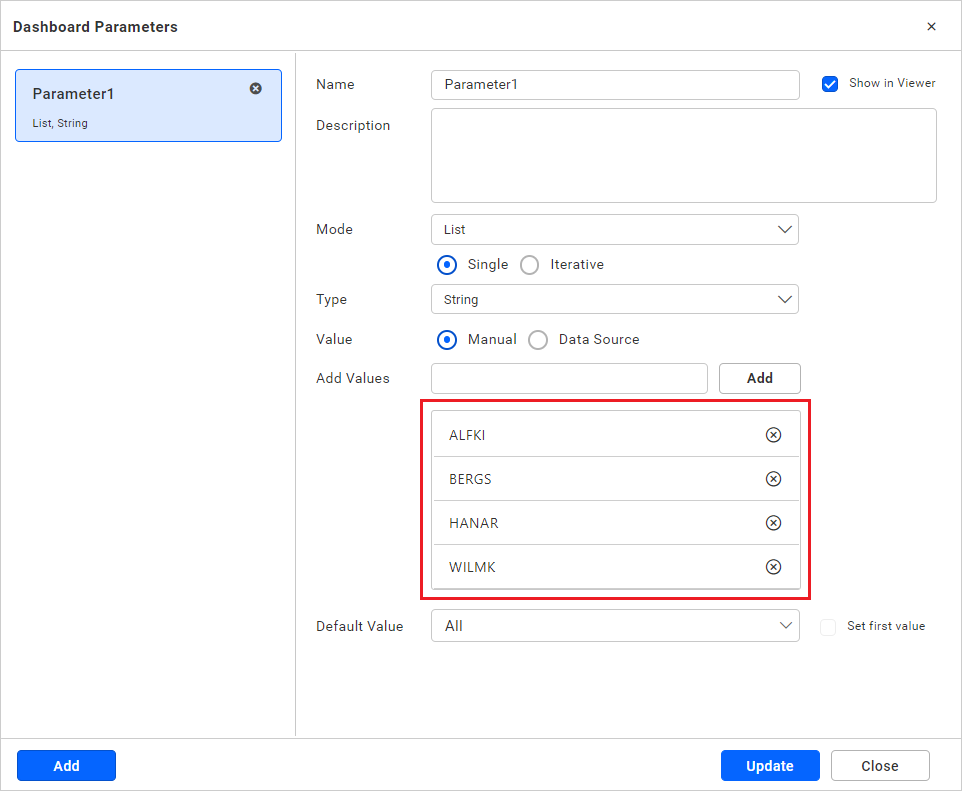
Users can edit the added values by double-clicking on the value. Users can also uncheck or check an eye icon to include or exclude values.
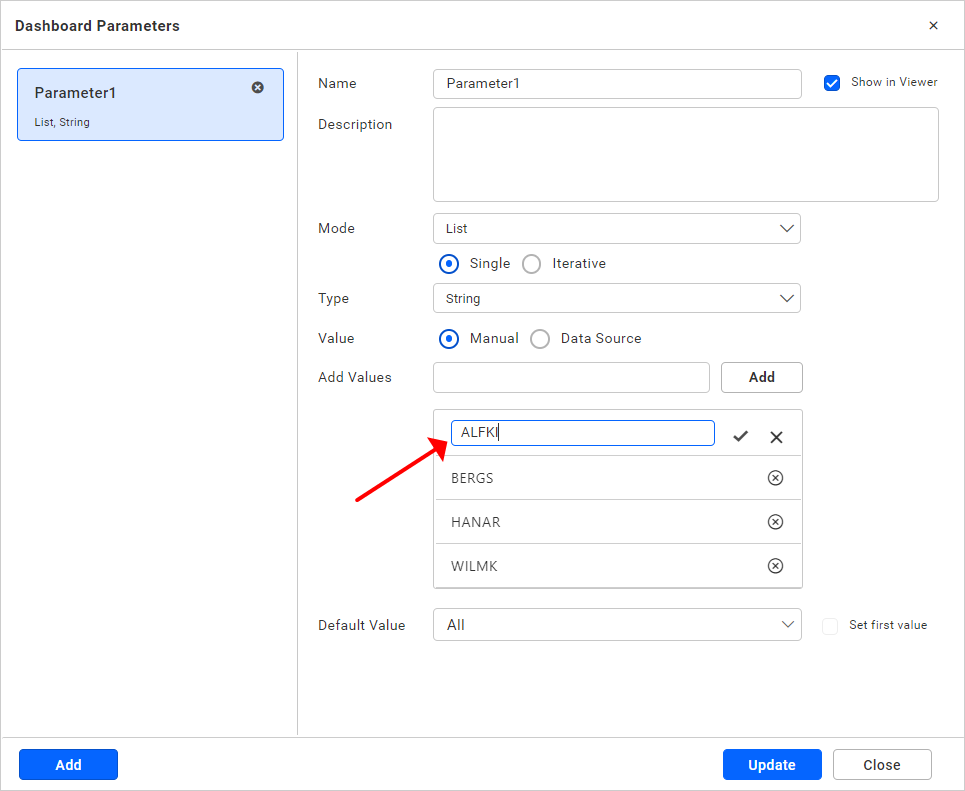
Users can uncheck or check values and include or exclude values using the multi selection combo box.
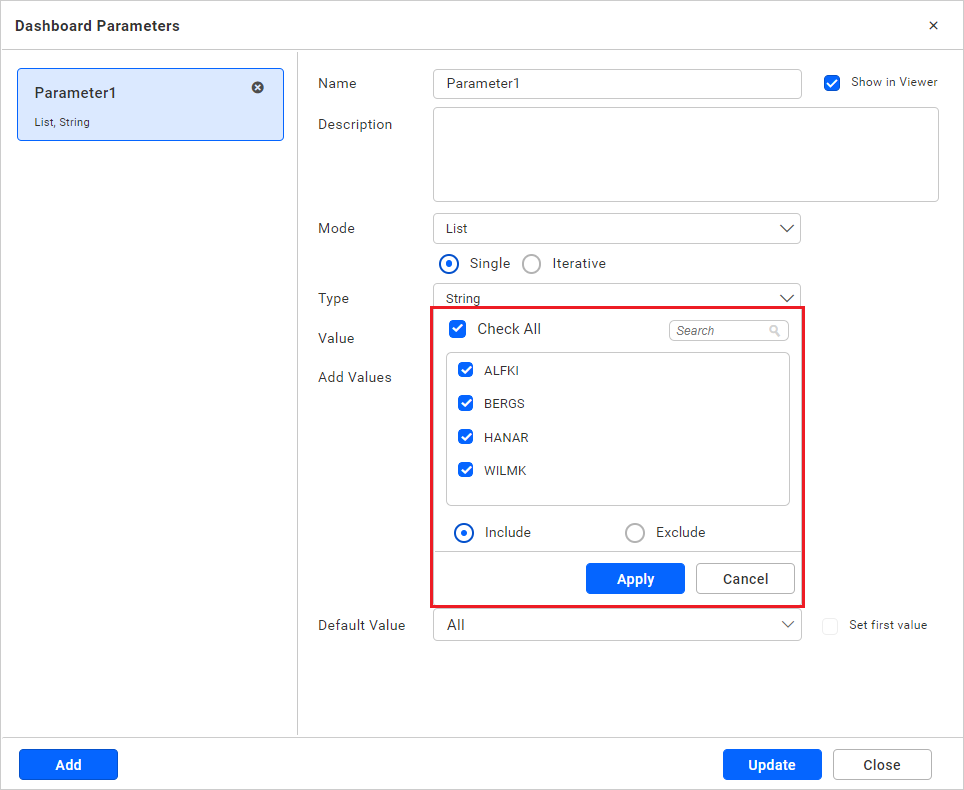
The list values will be shown while viewing the dashboard, and users can select a value from the list.
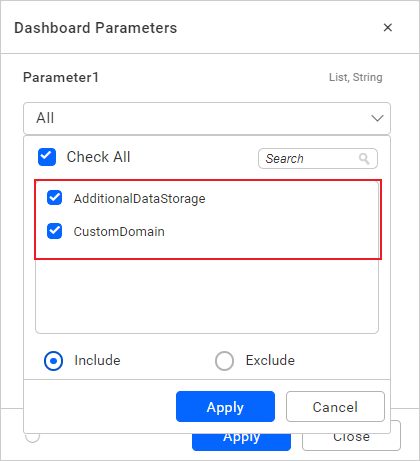
Users can create parameters with the same name for more than one data source. When previewing the dashboard, the data source name will be appended with the parameter name.
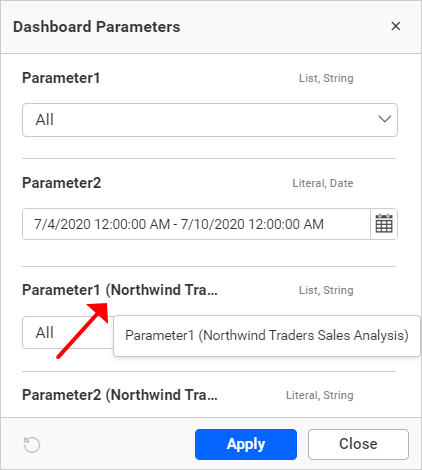
List Data Source type
There are three different types in the list data source type:
-
Data Source: Data fetched from fields for currently dragged tables. -
Table: Data fetched from any table from the current data source. -
Custom Query: Users can fetch data using the custom query option.
Users can select the type of data fetched from the Field drop-down.

Users can select the field from where the data is to be fetched from the Field drop-down.
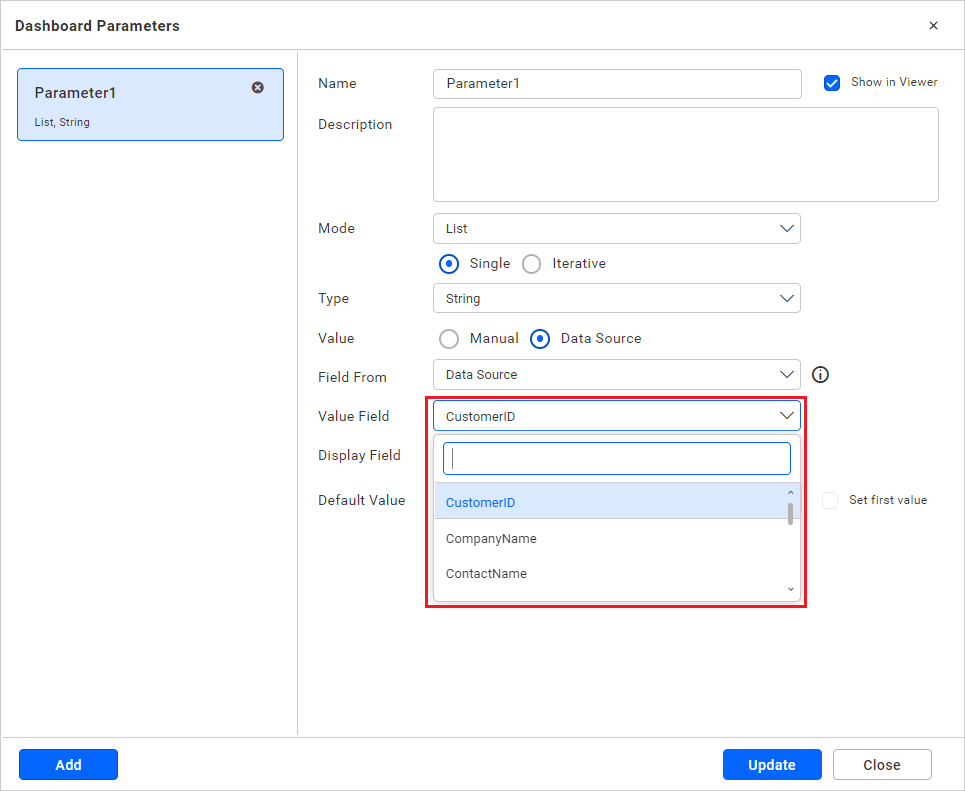
Users can select or unselect and include or exclude data from the multi-selection combo box.
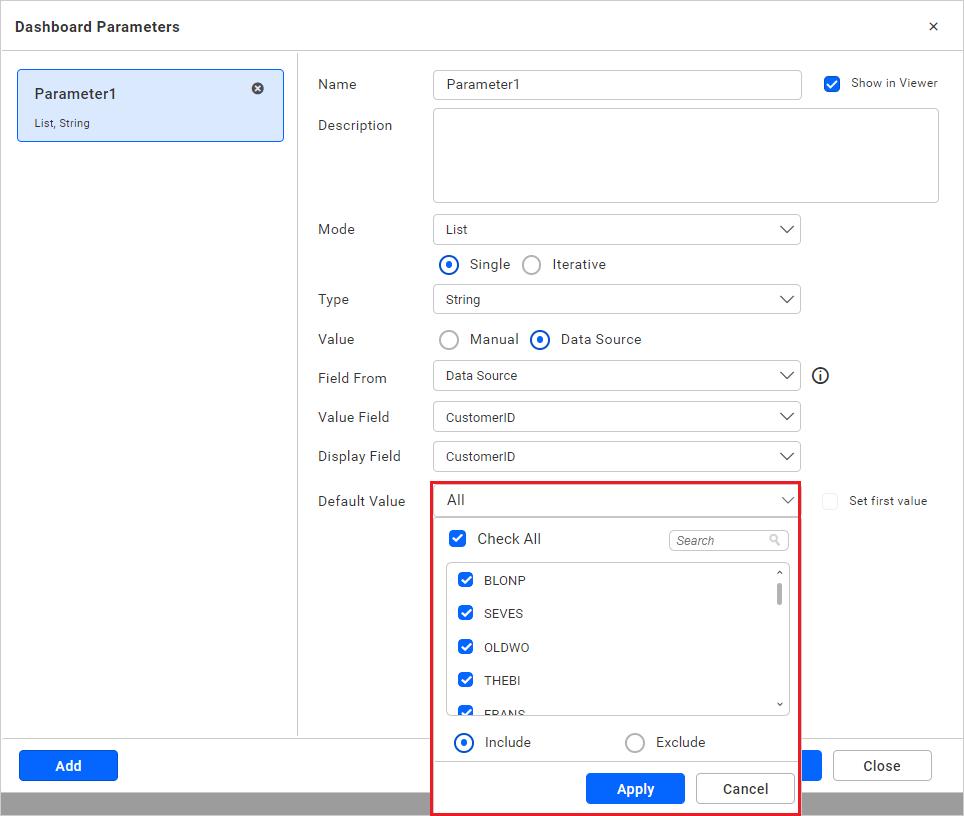
In Table type parameter, users can select the table from the current data source from the Table drop-down.
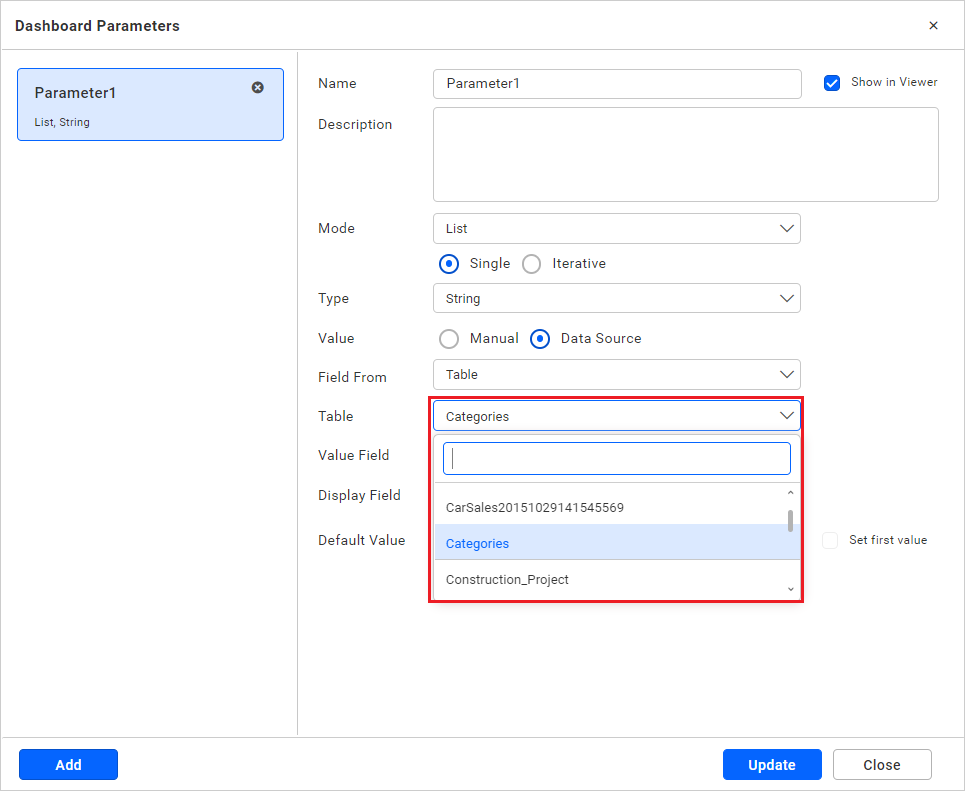
In Custom Query type parameter, select Run to execute the query.
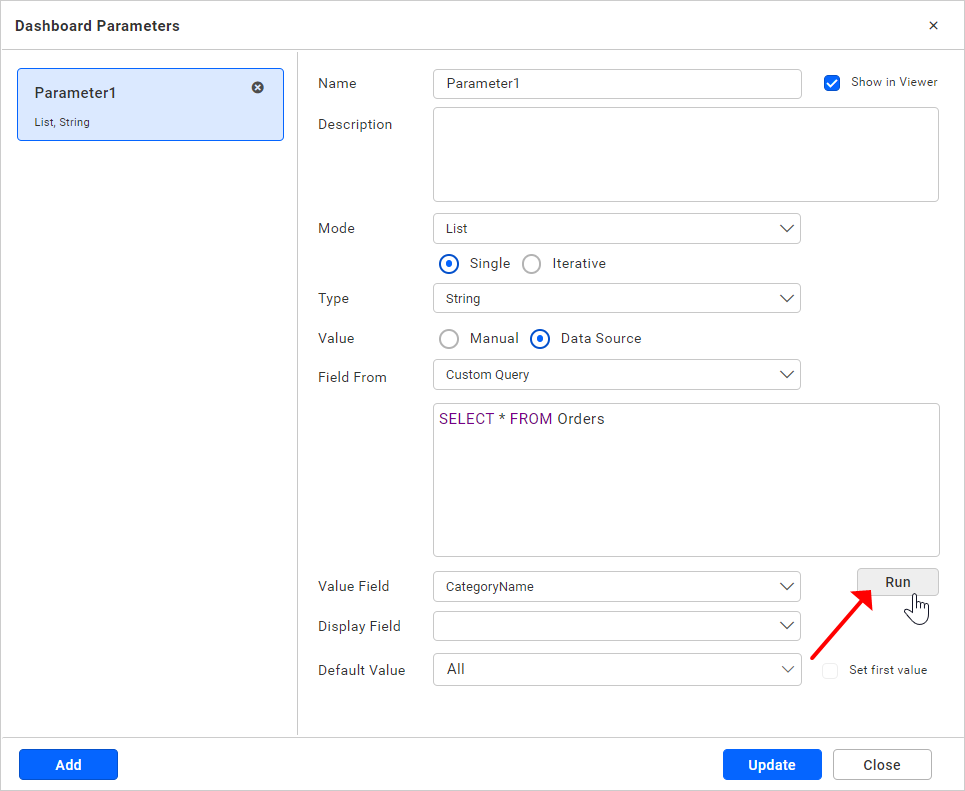
Show In Viewer
When the Show in Viewer option is enabled in the Dashboard Parameters window, the parameters added in the dashboard will be available in the dashboard preview.
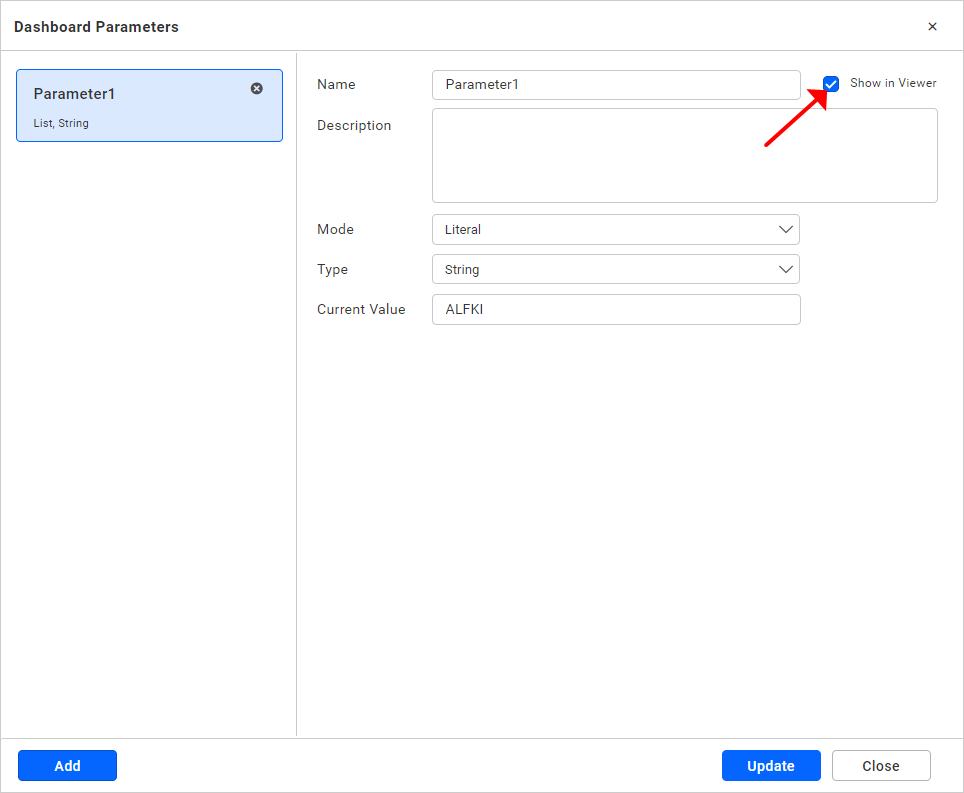
Set first value
When the Set First Value option is enabled in the Dashboard Parameters window, only the first value is selected from the list of selected values for the parameter.

Edit a Dashboard parameter
Select a parameter from the left panel, modify the parameters, and click Update.

Remove a Dashboard Parameter
Select a parameter from the left panel and remove the parameter using the delete icon.
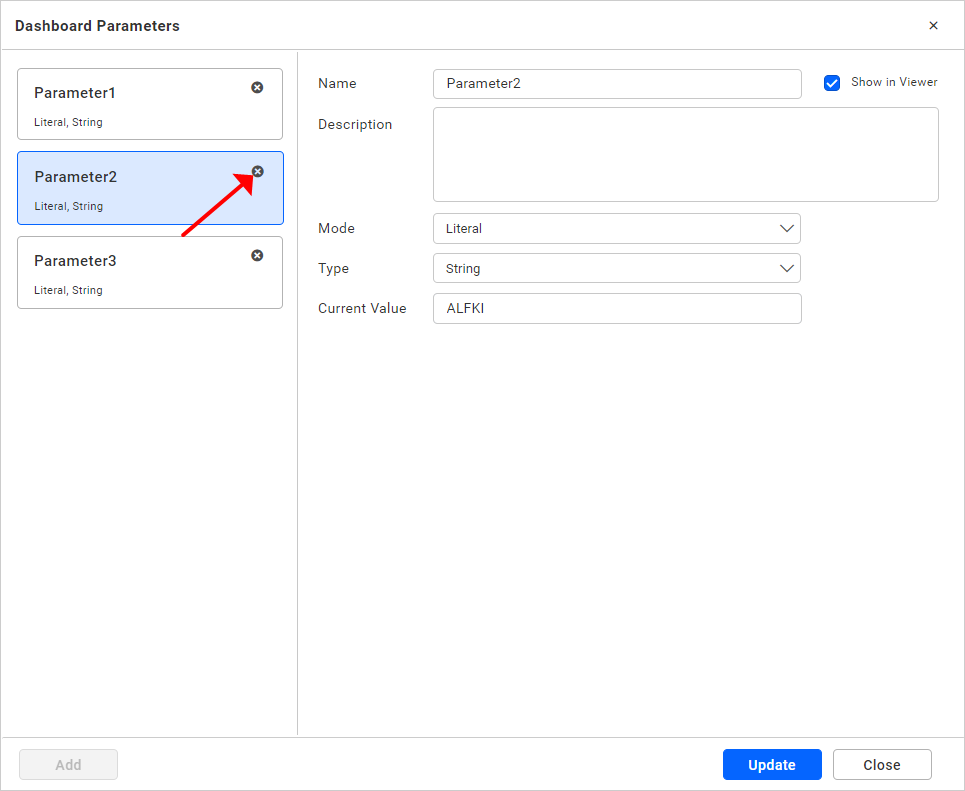
- Add a Dashboard Parameters
- Modes
- Literal mode
- List Mode
- List Manual type
- List Data Source type
- Show In Viewer
- Set first value
- Edit a Dashboard parameter
- Remove a Dashboard Parameter
Having trouble getting help?
Contact Support- Add a Dashboard Parameters
- Modes
- Literal mode
- List Mode
- List Manual type
- List Data Source type
- Show In Viewer
- Set first value
- Edit a Dashboard parameter
- Remove a Dashboard Parameter
Having trouble getting help?
Contact Support